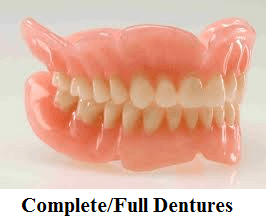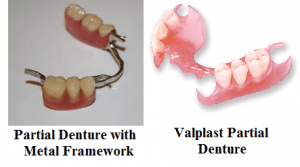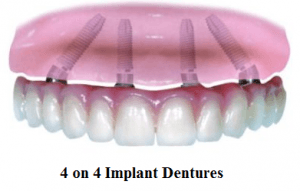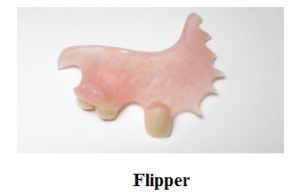False teeth, commonly known as “dentures“, are prosthetic devices constructed specifically to replace missing teeth. Typically, these devices are supported by the mouth’s surrounding soft (gums) and hard tissues (teeth). Although most dentures are removable, there are many different denture designs including some that rely on bonding onto teeth or dental implants. Dentures are divided into two categories: those designed for insertion into the upper row of teeth and those for the lower row (jaw).
Different Types of Dentures:
1. Complete De ntures | (Education Video)
ntures | (Education Video)
“Complete dentures can be either “conventional” or “immediate.” Made after the teeth have been removed and the gum tissue has begun to heal, a conventional denture is ready for placement in the mouth about eight to 12 weeks after the teeth have been removed.
Unlike conventional dentures, immediate dentures are made in advance and can be positioned as soon as the teeth are removed. As a result, the wearer does not have to be without teeth during the healing period. However, bones and gums shrink over time, especially during the healing period following tooth removal. Therefore a disadvantage of immediate dentures compared with conventional dentures is that they require more adjustments to fit properly during the healing process and generally should only be considered a temporary solution until conventional dentures can be made.” (WebMD.com)
 2. Partial Dentures | Educational Videos: Partial Denture w/ Metal & Valpast Partial
2. Partial Dentures | Educational Videos: Partial Denture w/ Metal & Valpast Partial
“A removable partial denture or bridge usually consists of replacement teeth attached to a pink or gum-colored plastic base, which is connected by metal framework that holds the denture in place in the mouth. Partial dentures are used when one or more natural teeth remain in the upper or lower jaw. A fixed (permanent) bridge replaces one or more teeth by placing crowns on the teeth on either side of the space and attaching artificial teeth to them. This “bridge” is then cemented into place. Not only does a partial denture fill in the spaces created by missing teeth, it prevents other teeth from changing position. A precision partial denture is removable and has internal attachments rather than clasps that attach to the adjacent crowns. This is a more natural-looking appliance.” (WebMD.com)
A removable appliance that holds one or more teeth to ensure an opening does not close. A flipper can be used for multiple of reasons, such as holding a space for new teeth to grow into, hold the space for an implant, or due to financial reasons at the time.
 Are There Alternatives to Dentures?
Are There Alternatives to Dentures?
Yes, dental implants can be used to support permanently cemented bridges, eliminating the need for a denture. The cost is usually greater, but the implants and bridges more closely resemble the feel of real teeth. Dental implants are becoming the alternative to dentures but not everyone is a candidate for implants. Consult your dentist for advice.

